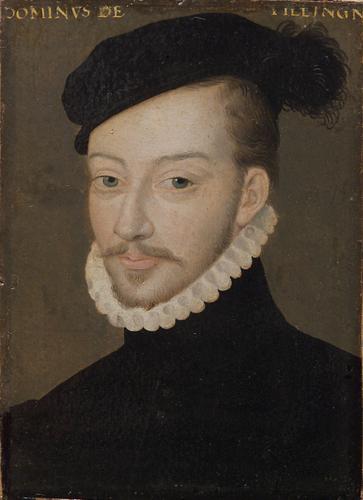Charles De Téligny on:
[Wikipedia]
[Google]
[Amazon]
 Charles de Téligny (c. 153524 August 1572) was a French soldier and
Charles de Téligny (c. 153524 August 1572) was a French soldier and
 Charles de Téligny (c. 153524 August 1572) was a French soldier and
Charles de Téligny (c. 153524 August 1572) was a French soldier and diplomat
A diplomat (from grc, δίπλωμα; romanized ''diploma'') is a person appointed by a state or an intergovernmental institution such as the United Nations or the European Union to conduct diplomacy with one or more other states or internati ...
.
Biography
De Téligny belonged to a respectedHuguenot
The Huguenots ( , also , ) were a religious group of French Protestants who held to the Reformed, or Calvinist, tradition of Protestantism. The term, which may be derived from the name of a Swiss political leader, the Genevan burgomaster Be ...
family of Rouerque, and received an excellent training in letters and arms at the house of Gaspard de Coligny.
He was employed on several peace missions; he represented the Protestants
Protestantism is a branch of Christianity that follows the theological tenets of the Protestant Reformation, a movement that began seeking to reform the Catholic Church from within in the 16th century against what its followers perceived to b ...
before the king, and was entrusted by Condé with the presentation of his terms to the queen-mother Catherine
Katherine, also spelled Catherine, and other variations are feminine names. They are popular in Christian countries because of their derivation from the name of one of the first Christian saints, Catherine of Alexandria.
In the early Christ ...
in 1567, and in the following year he assisted at the conference at Châlons and signed the Peace of Longjumeau
The Peace of Longjumeau (also known as the Treaty of Longjumeau or the Edict of Longjumeau) was signed on 23 March 1568 by Charles IX of France and Catherine de' Medici. The edict brought to an end the brief second French Wars of Religion with t ...
, which was destined to be of short duration.
On the outbreak of war, he took part in the siege of Poitiers, directed an unsuccessful attack on Nantes, fought bravely under Coligny at Moncontour, and participated in the negotiations ending in the Peace of Saint-Germain-en-Laye
The Peace of Saint-Germain-en-Laye was signed on 8 August 1570 by Charles IX of France, Gaspard II de Coligny and Jeanne d'Albret, and ended the 1568 to 1570 Third Civil War, part of the French Wars of Religion.
The Peace went much further tha ...
(8 August 1570).
In 1571 he retired to La Rochelle
La Rochelle (, , ; Poitevin-Saintongeais: ''La Rochéle''; oc, La Rochèla ) is a city on the west coast of France and a seaport on the Bay of Biscay, a part of the Atlantic Ocean. It is the capital of the Charente-Maritime department. With ...
and married Louise de Coligny
Louise de Coligny (23 September 1555 – 9 November 1620) was a Princess consort of Orange as the fourth and last spouse of William the Silent. She was the daughter of Gaspard II de Coligny and Charlotte de Laval.
Biography
Louise was born at C ...
, but was speedily recalled to Paris to serve on the bi-partisan commission of adjustment. Although he won the special favour of Charles IX, he became one of the first victims in the massacre of St Bartholomew's Day. He was murdered in the halls of the Louvre
The Louvre ( ), or the Louvre Museum ( ), is the world's most-visited museum, and an historic landmark in Paris, France. It is the home of some of the best-known works of art, including the ''Mona Lisa'' and the ''Venus de Milo''. A central l ...
after refusing to recant his Protestant beliefs. His remains were taken to the Castle of Téligny in 1617, but eight years later were thrown into the river by the Bishop of Castres
The Catholic Diocese of Castres, in Southern France, was created in 1317 from the diocese of Albi. It was suppressed at the time of the French Revolution, under the Concordat of 1801.16th-century French diplomats
French Protestants
French soldiers
Huguenots
1530s births
1572 deaths